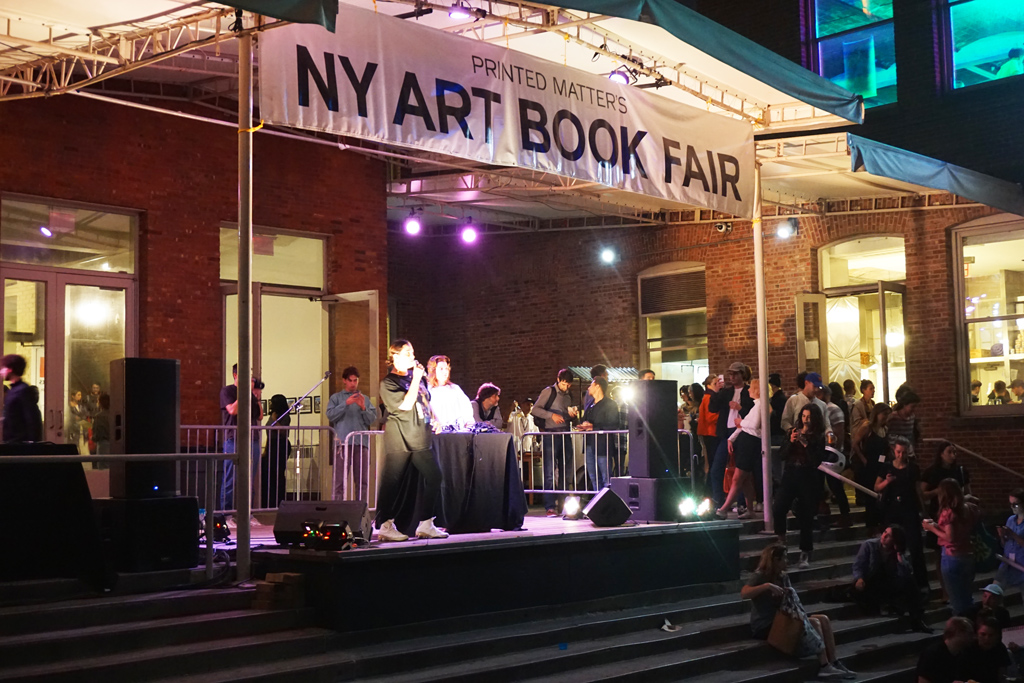[ad_1]
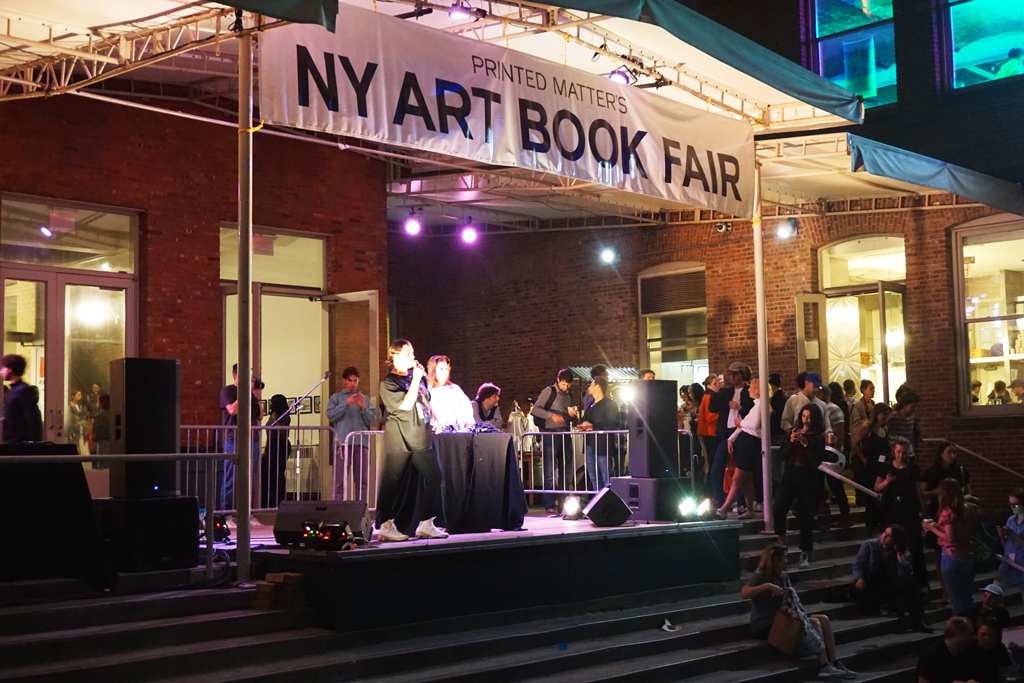
Odwalla1221 performing during the opening night preview of the 2018 NY Art Book Fair, organized by Printed Matter, at MoMA PS1.
MAXIMILÍANO DURÓN/ARTNEWS
Printed Matter’s annual NY Art Book Fair bets on the fact that one can never have too many art books, and the bibliophiles donning tote bags who show up in droves each year serve as proof of the assertion. This year’s 13th edition of the fair opened Thursday night at New York’s MoMA PS1 with crowds waiting to get their hands on zines, catalogues, rare books, posters, and more. Beer and frozen Aperol spritzes flowed, the line for food at M. Wells Dinette swelled, and many pages were riffled through in a ritual that will continue through Sunday.
Amid the crush, it was notably pleasant inside. “It’s not as hot this year!” one exhibitor exclaimed, in reference to past proceedings that have been known to swelter. Among the artists there were Andrea Fraser, who mingled by copies of her book 2016 in Money, Museums, and Politics at the table for Westreich Wagner, and Leigh Ledare and Nayland Blake.
Amid this year’s mix of small indie publishers and displays arranged by mega-galleries, Hauser & Wirth is peddling its newly released book of Jack Whitten’s writings on a Dieter Roth–designed case, and Gagosian has taken over a gallery and turned it into a presentation of new work by the choreographer William Forsythe, with instructions for a performance that visitors can stage themselves. “HOLDING BOTH SETS OF FINGERTIPS CLOSED, SAY ‘LINE’ ALOUD,” a message reads both in braille and regular print.
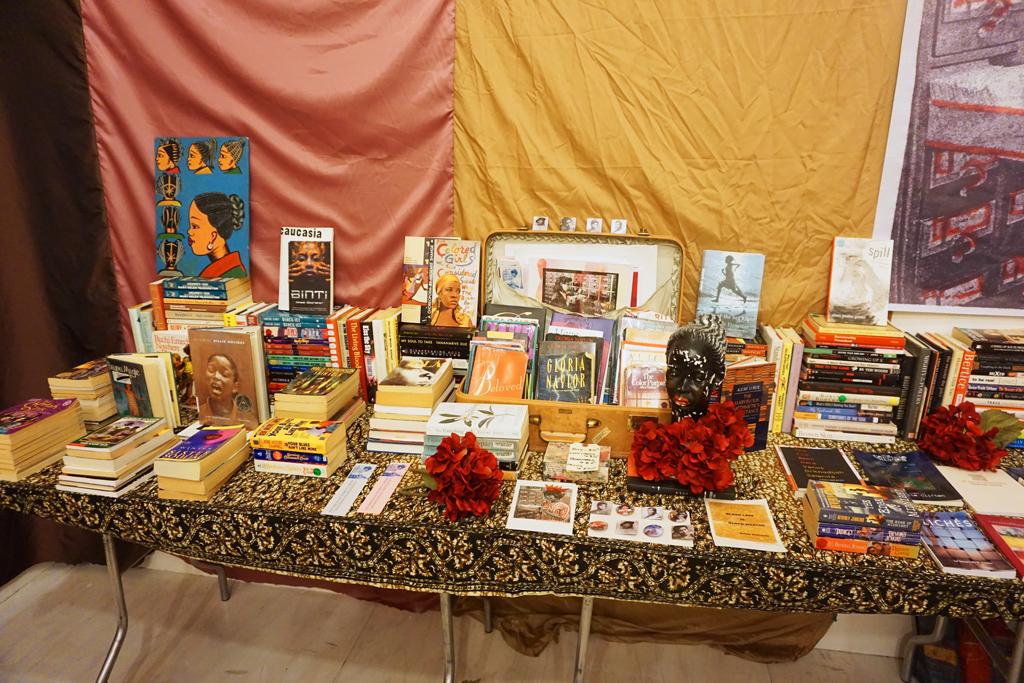
View of the Free Black Women’s Library, by 3 Dot Zine, at the 2018 NY Art Book Fair, organized by Printed Matter, at MoMA PS1.
MAXIMILÍANO DURÓN/ARTNEWS
Among the smaller sellers from locales including Europe, Asia, and South America is DesapÊ, a Brazilian outfit offering rare materials related to Octavio Paz’s writings about Marcel Duchamp and posters by artists involved with the Concretist movement. Some of the most endearing items at DesapÊ are Roger Colon’s “Biblioteca Popular Ambulante” books—fragile, thin volumes filled with things the artist found while wandering the streets of Argentina, with each book devoted to a specific type of object. “It’s super funny,” Rita M M Barbosa, DesapÊ’s owner, said of the series while leafing through a book filled with chipped yellow forks and plastic ties.
Some booths took a political tack. Space Sisters Press, from upstate Beacon, New York, has one of the fair’s most timely tomes: a Suzanne McClelland project called Net Worth Book that comes with a poster featuring blocks of text breaking down the heights, weights, astrological signs, and builds of famous men, from Bill Gates to P. Diddy. If women are objectified constantly in the media, reduced to numbers and figures every day, McLelland’s book suggests a leveling of the field by subjecting men to the same treatment. By the way, did you know the biceps of Robert Downey, Jr. measure 15 inches?
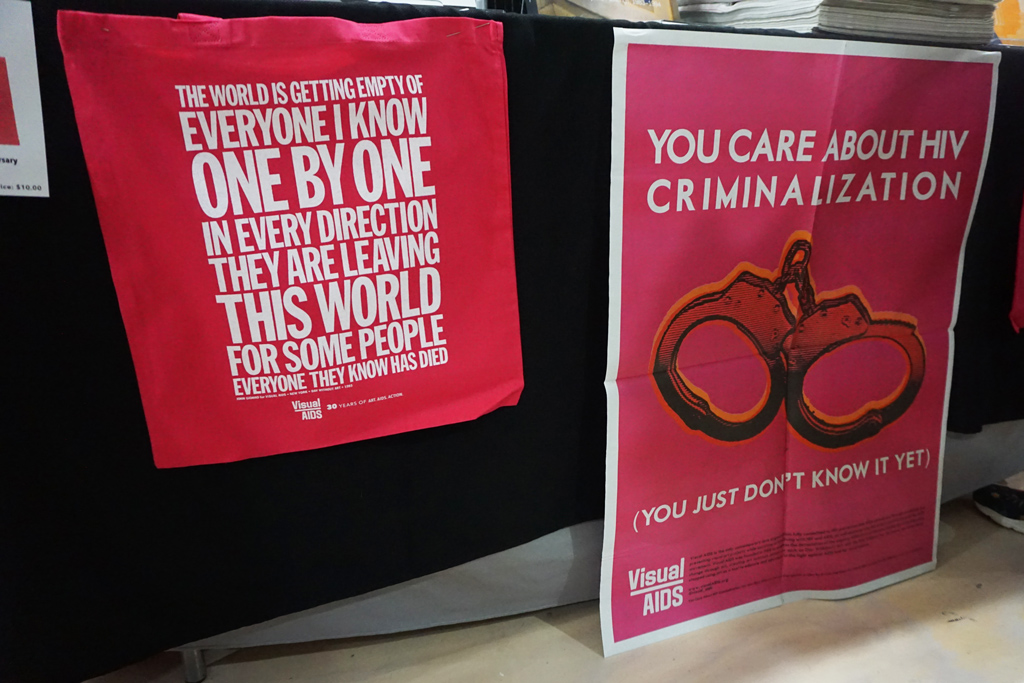
Tote bag and broadsheet in the booth of Visual AIDS, at the 2018 NY Art Book Fair, organized by Printed Matter, at MoMA PS1.
MAXIMILÍANO DURÓN/ARTNEWS
Elswhere, 3 Dot Zine set up a project space featuring an iteration of the Free Black Women’s Library, an ongoing enterprise facilitated by the artist OlaRonke Akinmowo that offers a selection of books by black female writers. The library had some volumes that one might expect—a dog-eared copy of Toni Morrison’s Beloved, fresh books by Edwidge Danticat—alongside well-loved titles from the Cheetah Girls book series. And if they bring another by a black female writer to replace it, visitors are allowed to take a book free of charge. “I’m thinking about how many books I want to trade,” Devin N. Morris, the artist who curated the space, said with a laugh. Two years ago, Morris started his own fair, the Brown Paper Zine and Small Press Fair, to spotlight work by “black, brown, and marginalized bodies.” If visitors think fairs of the kind are overly homogenous in terms of representation, Morris said, “It’s just that you’re not looking.”
Visual AIDS, the New York–based nonprofit dedicated to preserving the work of historical HIV/AIDS-related art and supporting HIV-positive contemporary artists, is giving away a powerful broadsheet titled “You Care About HIV Criminalization (You Just Don’t Know It Yet),” which forcefully—and poetically—details the ways in which a person’s HIV-positive status is still considered “a deadly weapon” in the U.S. Many states have laws that criminalize HIV, dating back to the height of the AIDS crisis in the late 1980s. The Visual AIDS text provides information on organizations working to dismantle such laws.
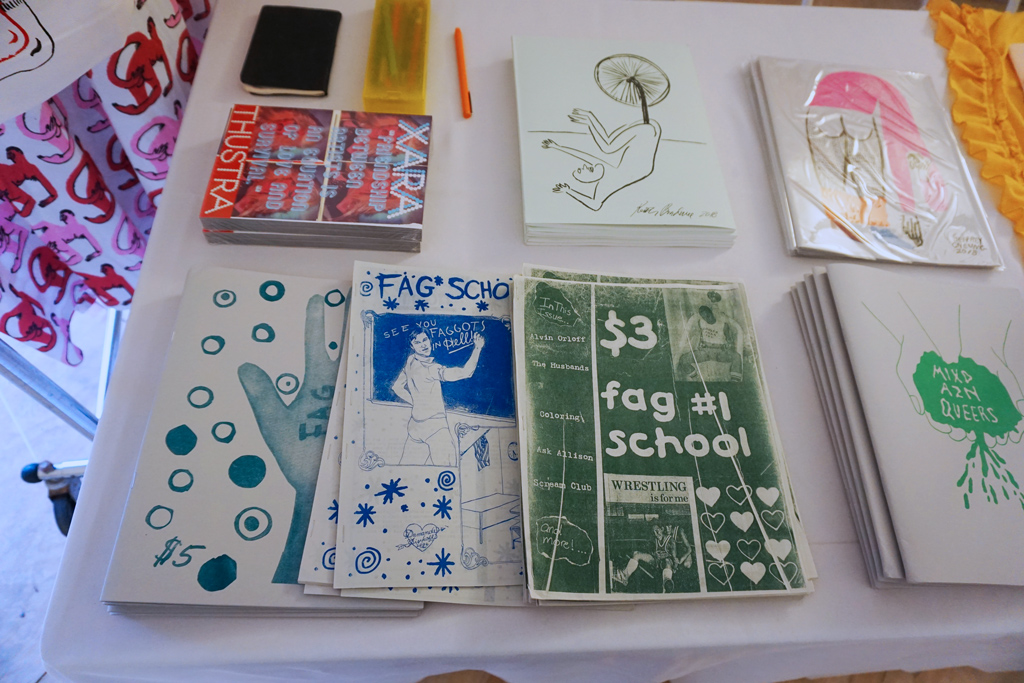
Issues of Brontez’s Fag School on offer by Unity Press, at the 2018 NY Art Book Fair, organized by Printed Matter, at MoMA PS1.
MAXIMILÍANO DURÓN/ARTNEWS
Visual AIDS has also released two new volumes in its biennial “Duets” series, which pairs artists, writers, or activists together in conversation. This year’s entries, hot off the presses as of last week, are Nayland Blake & Justin Vivian Bond in Conversation on Jerome Caja and Kia LaBeija & Julie Tolentino in Conversation. The latter presents an intergenerational dialogue between two queer women that addresses their relationships to the ongoing HIV pandemic. Tolentino is a longtime AIDS activist and artist who, among other things, staged a performance with Ron Athey for the third iteration of Day Without Art in 1991, cofounded the quintessential sex-positive queer gathering space the Clit Club, and cowrote, with Cynthia Madansky, Safer Sex Handbook for Lesbians. LaBeija, the current mother of the legendary ball House of LeBeija, is an artist whose photographic self-portraits explore her personal narrative as a person born with HIV and how that connects to the memory of her mother, who died of AIDS-related causes.
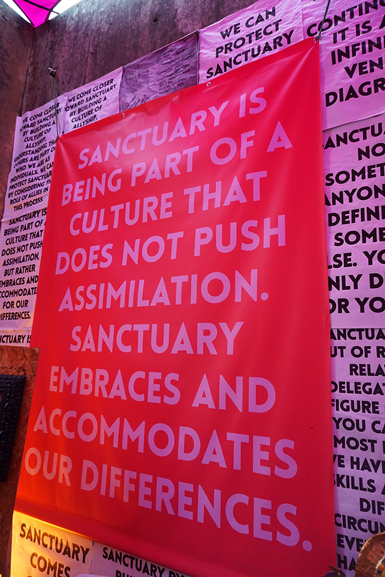
View of the installation by Baltimore Press Press, at the 2018 NY Art Book Fair, organized by Printed Matter, at MoMA PS1.
MAXIMILÍANO DURÓN/ARTNEWS
In the VW Dome in PS1’s courtyard, Unity Press is offering three volumes of the Fag School zine by Brontez Purnell. Each issue is a raucous riot, with features devoted to the band Le Tigre, Alvin Orloff, a “Young ‘n’ Hung” photo essay, and tips for adopting “The Life of a Totally FAB GO-GO BOY!” Recurring offerings include “Cruising Reviews” and an “Ask, Allison” advice column with answers to questions like “What would have been the polite way to KICK HIM THE FUCK OUT?” and “Is fucking hippies a no-no?”
Across from the dome in an open-air space, the Baltimore-based publisher Press Press has a slim volume by Bilphena Yahwon and Nnennaya Amuchie titled For Black Girls Considering Womanism Because Feminism Is Not Enuf as well as a compilation of conversations, writings, and artists projects collected in Sentiments: Expressions of Cultural Passage. Large-scale posters hanging around feature text drawn from Sentiments’s “Manifesto for Sanctuary–Building & Sanctuary-Keeping,” with points derived from a series of workshops in Baltimore, New York, and Chicago.
For the workshops, Press Press invited locals from each city who had undergone “cultural passage,” or the movement from one culture to another, to consider three questions: “What is sanctuary? How can sanctuary be created? How can sanctuary be protected?” The manifesto, directly culled from those interactions into 38 points and accessible online, notes that sanctuary spaces can be constructed anywhere: “SANCTUARY IS INSIDE OF YOU. FINDING YOUR INNER SANCTUARY HAS TO DO WITH RECOGNIZING YOUR OWN POWER, PRIVILEGE, AND THE ROLE YOU CAN PLAY IN ANY SITUATION.” Another point reads: “SANCTUARY IS NOT YET AN EXPERIENCE—IT IS THE HORIZON.”
[ad_2]
Source link

